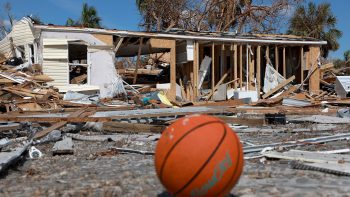
NOAA releases warmer climate “normals” for the U.S.

We know that climate change is happening, and there are all sorts of data and reports and analyses that can tell you the how and the why and the risks.
Tuesday we got a relatively simple measure of it from the National Oceanic and Atmospheric Administration.
What’s normal?
NOAA examines what’s been happening in the weather over the last few decades to create a baseline of what normal weather looks like all over the country. Every decade, the agency updates those “climate normals,” and, no big surprise, in many places normal is becoming hotter and wetter — at a rate that’s increased rapidly over the past 40 years.
Here’s what the new normal means for the economy.
The recent changes are, as the agency says, subtle, but the trend reflects what many of us are seeing, said Sandi Duncan, managing editor of the Farmers’ Almanac.
“Everybody has noticed that things seem off. You know, we see these flowers blooming earlier, perhaps the robin came back a little bit later or a little bit sooner,” she said.
And what’s “off” for a casual observer or gardener can be serious for a business making major investments.
That can apply to public utilities estimating how energy and water will be used. It can lead to higher insurance rates in places more likely to see storms.
Kia Javanmardian at McKinsey said he talks to insurance companies all the time. “They’ll use the data to, you know, understand where the risks are placed, and is their portfolio more risky or less risky than they thought?”
Then there’s the agriculture industry.
“Climate change is operating as a headwind. And it’s really sort of slowing down the global agricultural productivity growth,” said Ariel Ortiz-Bobea, who teaches at Cornell University.
And while this latest data tracks with what many farmers already know, seeing the hyperlocal breakdown of what goes into the new normal can give them additional resources to plan for the future.
There’s a lot happening in the world. Through it all, Marketplace is here for you.
You rely on Marketplace to break down the world’s events and tell you how it affects you in a fact-based, approachable way. We rely on your financial support to keep making that possible.
Your donation today powers the independent journalism that you rely on. For just $5/month, you can help sustain Marketplace so we can keep reporting on the things that matter to you.

















